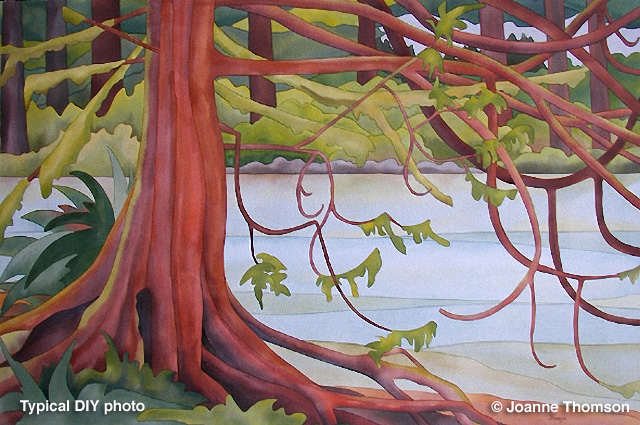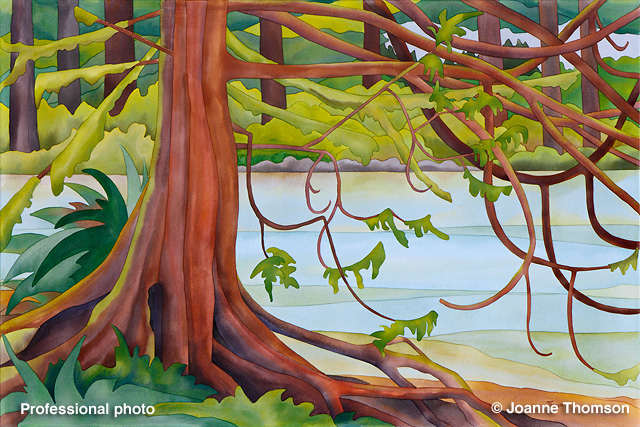Top-quality, colour-accurate scans and photos of your original 2-dimensional artwork.
Here is a real-world example comparing an artist’s own photograph of her artwork and the result I was able to provide when better quality was required to make art cards and prints.
The first frame is the artist’s photo. It’s not terrible, but it was taken with a compact digital camera under typical lighting conditions. The colours are not quite right, and it would be difficult to correct them to match the original. The image is slightly distorted and blurry in places because of the limitations of the camera’s tiny lens and sensor.
The second frame is the photograph I took, with accurate color rendition, low image distortion, and much higher resolution. More accurate framing allows me to fit more of the artwork in the picture.
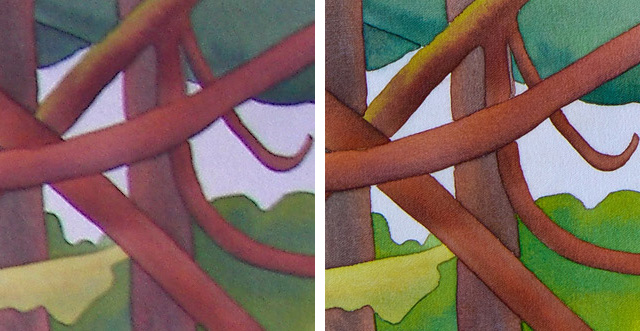
Close up, the difference is dramatic. The artist’s own photo is on the left, my photo on the right (and reduced in size to match). See how much better this beautiful art looks now? A high-quality reproduction does your work the justice it deserves and will help you sell that card, get that commission or have your piece accepted into that show! My colleague Joanne Thomson showed good judgement when she hired me to photograph her work, as this is one of her best-selling cards. I like to think I helped a little with that.
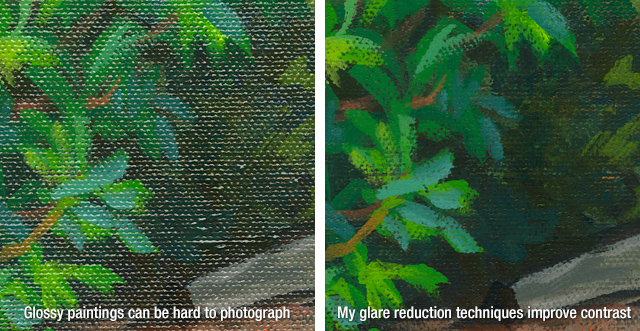
Some works may be challenging to photograph or scan, especially those which are highly textured or varnished to a high gloss. For both photographs of work on canvas and scans of work on paper, I have developed techniques to mitigate glare and unwanted texture artifacts.
It is also possible to scan or photograph larger works in sections and stitch them together if you require especially large, high-resolution reproductions.
The most difficult paintings to photograph are those featuring metallic and iridescent pigments. These works may require an additional fee.
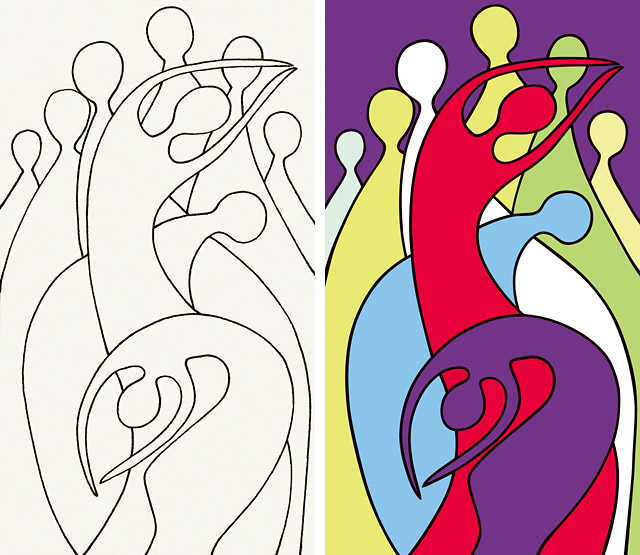
Vectorization
Some applications require a different treatment: conversion to “vector art” or “Illustrator format”. This process involves converting your drawing to a set of infinitely scalable curves that are smooth no matter how large or small they are displayed. Logos, posters and signage often need the vector treatment. The example here is an illustration for She Said Gallery in Victoria, BC, drawn by Joanne Thomson. It is used on business cards and signage.

